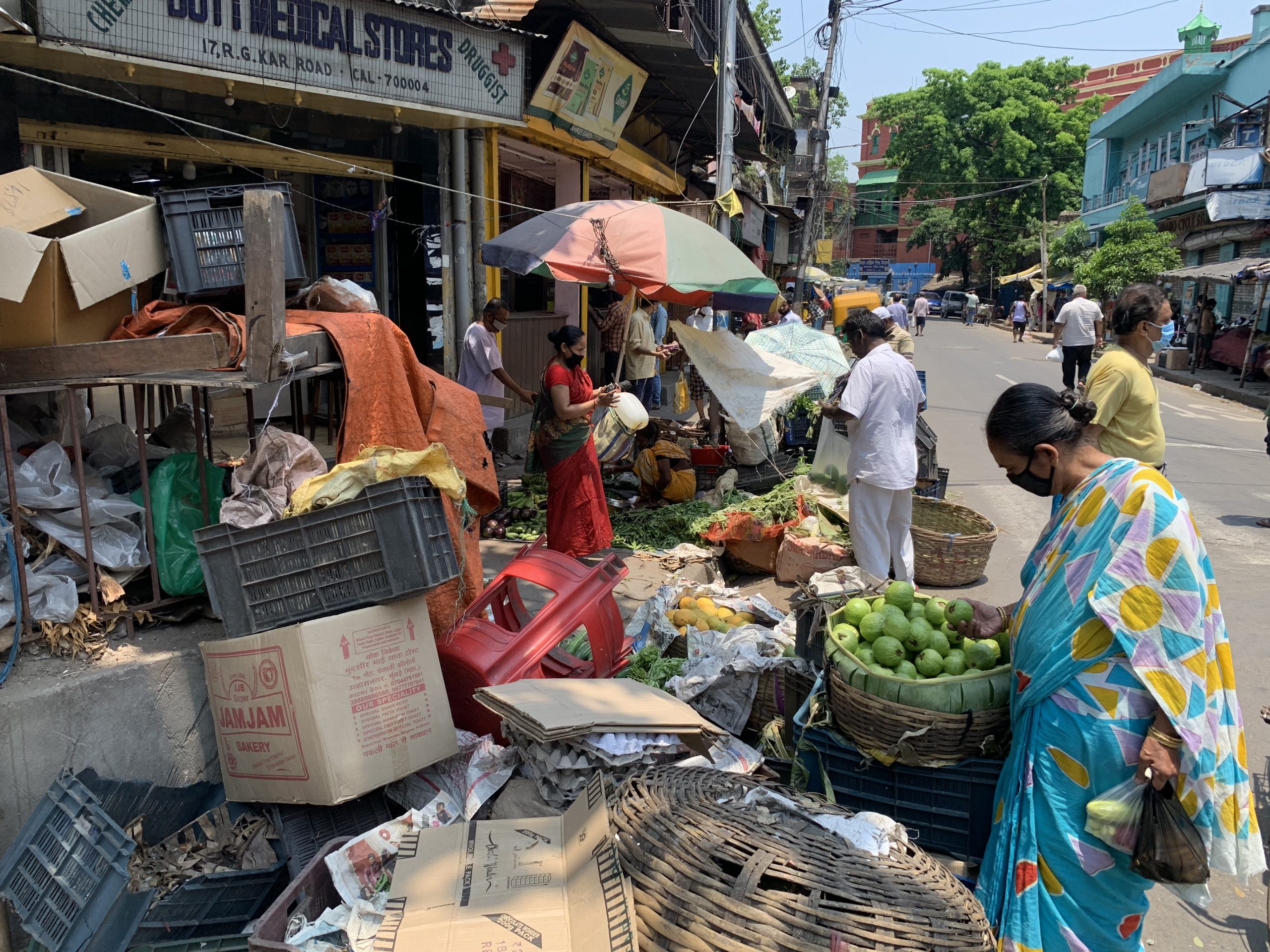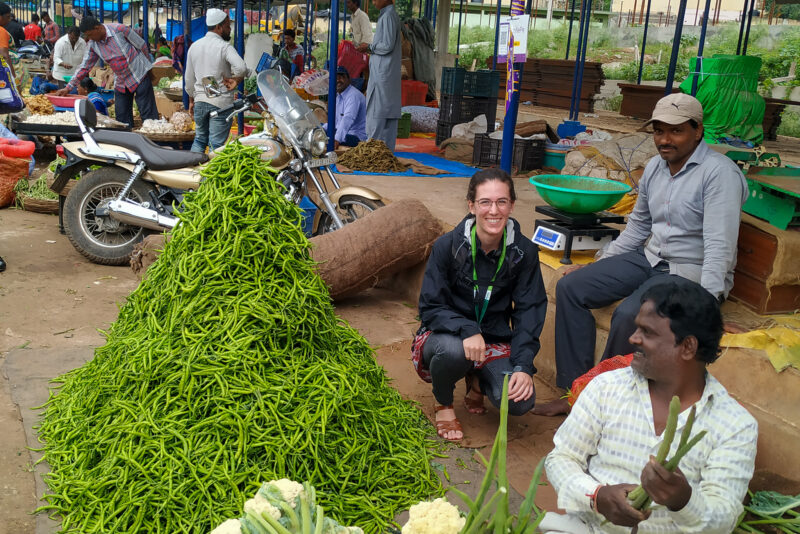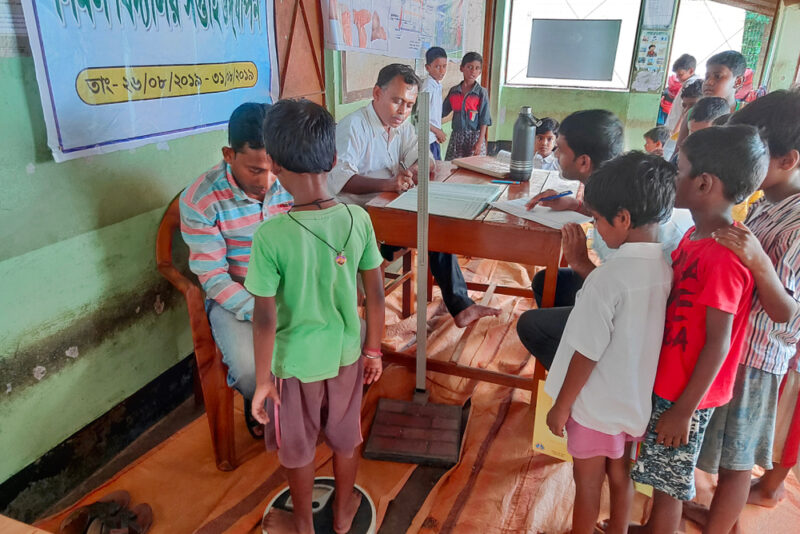TCI Study Finds COVID-19 Could Exacerbate Malnutrition in India

In a report published July 17, researchers from the Tata-Cornell Institute for Agriculture and Nutrition (TCI) show that India’s rigorous lockdown has driven up the price of produce, limiting people’s ability to afford a nutritionally diverse diet.
In the study, Pandemic Prices: Price Shocks from COVID-19 and Their Implications on Nutrition Security in India, TCI analyzed the average weekly price of cereal grains, vegetables, pulses (the edible seeds of plants in the legume family, such as beans and peas) and eggs in 11 major metropolitan cities across India between March 1 and May 31, comparing them to the 2019 prices and the weeks before the lockdown.
TCI is part of the College of Agriculture and Life Sciences (CALS) and hosted by the Charles H. Dyson School of Applied Economics and Management.
Since the 1960s, India has taken important steps toward reducing widespread undernutrition across the country. But COVID-19 has threatened to wipe out that progress due to significant disruptions in food supply chains that disproportionately affect the most nutrient-rich foods.
When the Indian government instituted a nationwide lockdown on March 24, agricultural sectors were quickly granted an exemption. However, fresh produce was restricted from moving along the supply chain as markets closed and migrant farmworkers were forced to leave the big cities and return to their native villages.
Pulses’ place as an important, shelf-stable source of protein in Indian diets has created heightened demand during the lockdown, which, combined with supply chain troubles, has kept their prices persistently high. This disruption makes ensuring the provision of adequate protein an urgent challenge during the pandemic.
Even as consumers engaged in panic buying, the demand for perishable items fell without bulk buyers in the hospitality industry. These disruptions caused the price of vegetables, pulses, and eggs to rise, while the price of cereals remained relatively stable.
“The increase in the prices of noncereal foods like vegetables and pulses, which are generally more nutritious than cereals, means that Indians would be less likely to afford and eat them,” said Bhaskar Mittra, associate director of TCI and co-author of the report. “This potentially leaves Indians without access to important nutrients in the midst of a health crisis.”
Governmental policies put into place during the Green Revolution of the 1960s are among the reasons cereals were less affected during the lockdown. Those policies focused on incentivizing the production of crops such as wheat and rice in order to meet the calorific needs of an undernourished population. During the pandemic, that additional support protected the cereal supply chain and kept prices stable.
For noncereals, which lack the same governmental support, both the supply chain and the prices of those products became unpredictable. Of the food that TCI analyzed, the price of potatoes increased by 20%-180%, onions increased up to 200% and the cost of some pulses increased by as much as 80%. The price of eggs initially fell due to rumors that poultry could carry the virus, but later in lockdown it increased by up to 30%.

The Pandemic Prices report is available for download in PDF format.
“Pulses’ place as an important, shelf-stable source of protein in Indian diets has created heightened demand during the lockdown, which, combined with supply chain troubles, has kept their prices persistently high,” Mittra said. “This disruption makes ensuring the provision of adequate protein an urgent challenge during the pandemic.”When the government lifted the national lockdown in late May, the prices of potatoes, onions, and eggs began to stabilize. But the price of pulses remains high – compared with both the previous year and the weeks before lockdown.
While high prices have made it more difficult for people to buy nutritious groceries, the report also notes that the lockdown impacted government programs that already provided access to healthy foods. For example, children normally receive a nutritious midday meal at government and government-assisted schools. However, those schools closed during lockdown, so children had access only to the foods that their parents could afford to bring home.
TCI’s report acknowledges that the Indian government took steps to address supply chain issues – amending laws to liberalize markets, distributing extra allotments of grains and pulses, and enabling farmers to store excess crops. However, the institute said the government needs to take additional action to ensure that long-term gains India has made in its fight against undernutrition are not reversed due to these short-term disruptions from COVID-19.
Nationwide price inflation for food reached 9.3% in May, and some parts of the country are still experiencing supply chain disruptions, largely due to local lockdowns to combat rising infection rates.
“The Indian government is working in the right direction to provide people with adequate food, but should prioritize access to protein-rich, nutritious foods,” Mittra said. “The COVID-19 pandemic presents an opportunity for the government to bolster production of non-cereals and strengthen supply chains to mitigate any future disruptions.”
The report was co-authored by Payal Seth, a consultant with TCI, and TCI Director Prabhu Pingali, a professor at Dyson with joint appointments in the Division of Nutritional Sciences and the Department of Global Development in CALS.





